Humitas are made by grounding and cooking fresh corn and seasoning, wrapped in fresh corn husks, and steamed. The inside is hot, and the corn paste is mild in flavor.
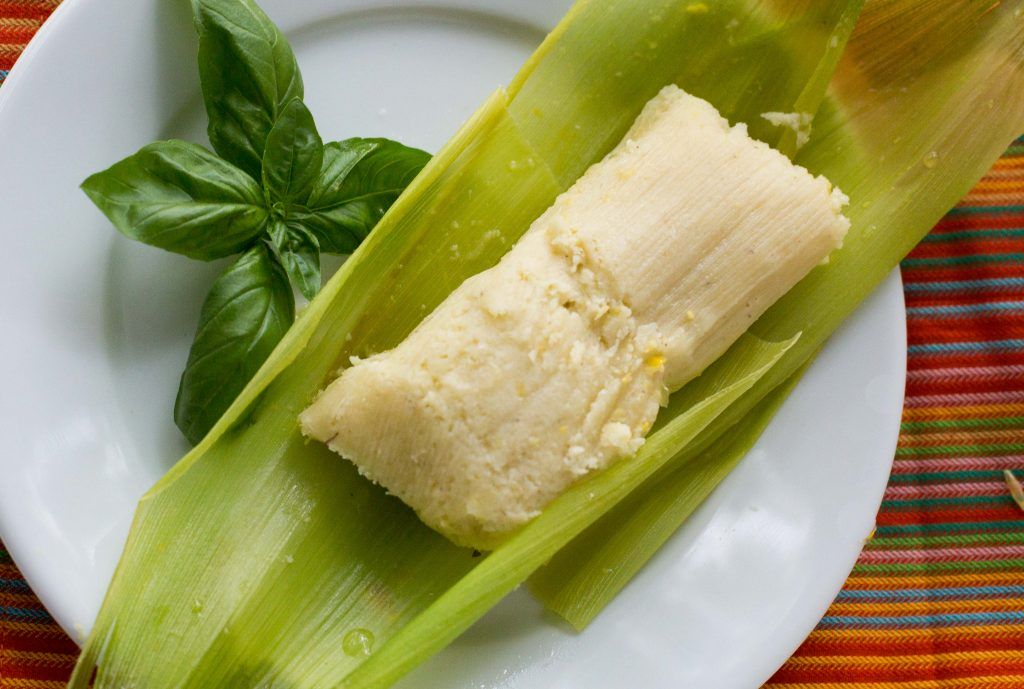
In my family, at least a couple of summer weekends were dedicated to cooking Humitas to freeze and store for the winter. The precise moment is when the suitable variety of corn, called “Humeros,” and the basil are abundant and cheap, but before the corn over-ripens and turns dry. Always check the corn; it should look milky.
It is unnecessary to do everything in one day; you can cut and match the corn’s husk and leave the mixture ready the day before. The next day, I made the humitas and enjoyed it! Serve with an excellent Chilean salad. Or a few slices of real tomatoes, a true ode to the Chilean summer.
Humitas are popular in Ecuador, Chile, Argentina, Mexico (tamales de elote), and other countries. They have different seasonings (in Ecuador, they add cheese to the corn filling), but the method is the same. In Ecuador, they are eaten at breakfast. In Chile, they are the appetizer or main dish.
What variety of corn is traditionally used?
Humitas are made with Humero corn. This variety of corn is widespread in Chile but very difficult to find in other countries. Humero corn has irregular kernels. If the rows of the kernels are neat, it is not the correct one. The husk is hard. When you prick the corn, whitish milk comes out. Use fresh; don’t store it for more than ten days. The corn dries out and loses its consistency.
Is the Humero corn native or introduced to Chile?
Humero corn is a cross of native Chilean corn and a commercial variety introduced in the early 1900s. Corn was grown in Chile; before the arrival of the Spaniards, it was an abundant crop from Copiapó to Chiloé. Along with potatoes, they were the most popular crops. Wheat was introduced by the Spaniards and partially displaced corn.
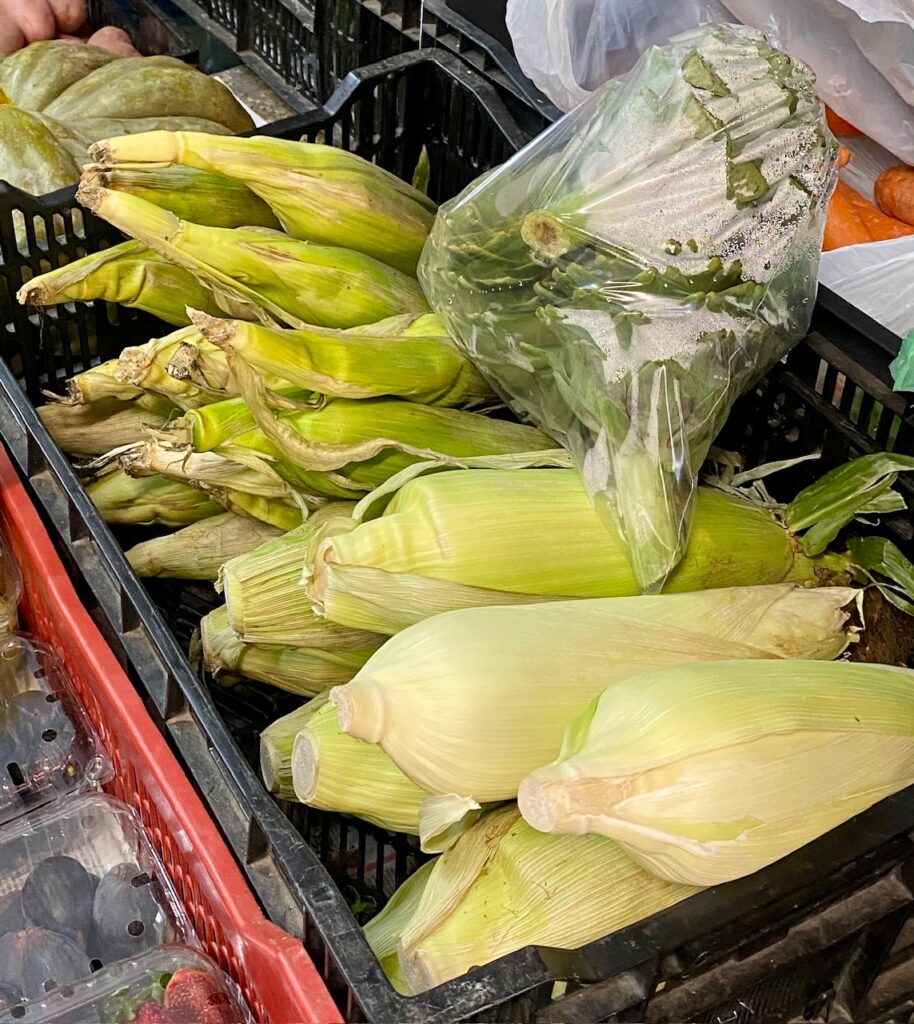
When does the Humero corn season start in Chile?
It starts showing up at markets in mid-December and is easy to find until early March.
In what other dishes can I use corn?
Porotos con Mazamorra (summer bean soup) and Porotos Granados (bean stew) are traditional. Click on the names to see the recipes.
If I let a Humero corn dry, can I make popcorn?
In theory, the classic variety of dried corn for popcorn in Chile is Curagua.
How do I replace Chilean corn in the US?
I recommend using frozen corn (whole kernel) and adding cornmeal to thicken and improve the flavor while cooking the corn paste. The corn in the US is sweeter because it is a different variety. Cornmeal works better than cornstarch and polenta. Never add sugar to the mix.
Can I plant Chilean corn in the US?
Yes, you can follow the same calendar as the US corn varieties. Here, you can buy seeds.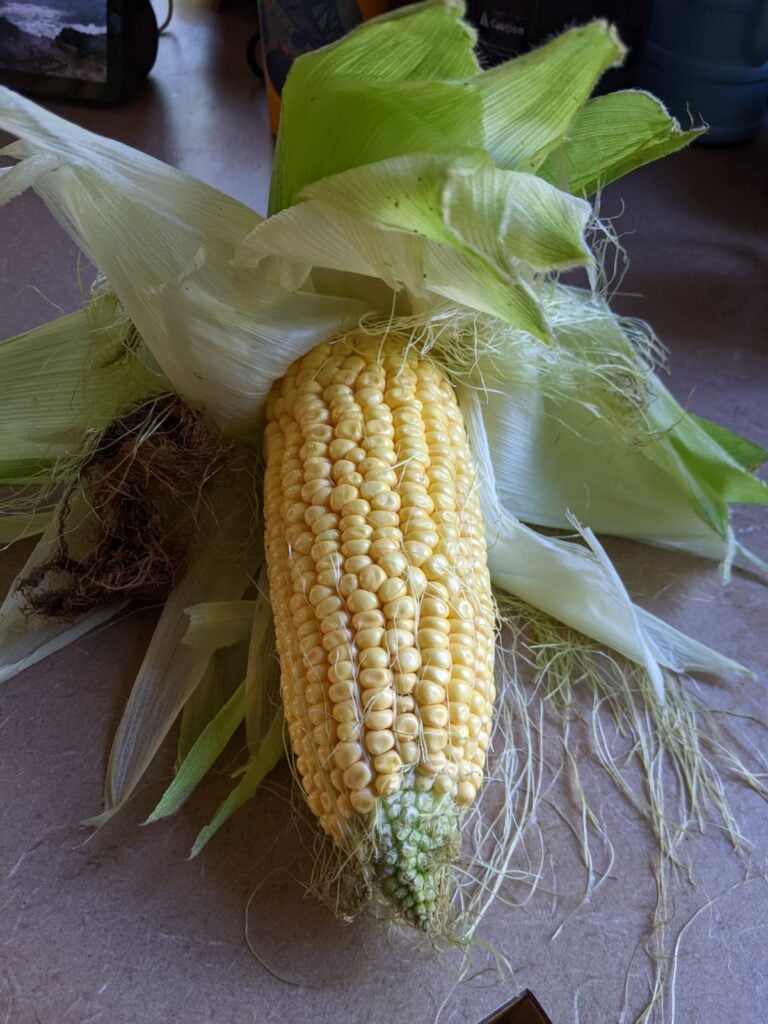
Can I use canned corn, and what basil should I buy in the US?
I do not recommend using canned corn. It has more water than frozen corn. If you do not have an option, calibrate it with cornmeal to achieve the correct texture.
You have to be careful with basil. Thai basils have a lot of anise flavors. I recommend using Sweet basil or Genovese (in moderation). Taste the basil before adding it to the corn paste.
Maybe you’re interested in the recipe: Corn Pie or Pastel de Choclo.
Print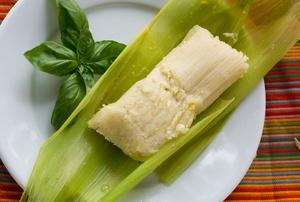
Humitas
A summer classic, but very laborious.
- Total Time: 3 hours and 45 minutes
- Yield: 16
Ingredients
- 12 large ears of green corn “Humeros” (or 3 pounds of frozen whole kernel corn plus 4 tablespoons of cornmeal)
- 2 large onions, chopped into small cubes
- 2 tablespoons of lard or butter or Color
- 1/2 cup of milk
- 1 tablespoon of paprika
- 1/4 teaspoon of pepper
- 2 teaspoons of salt
- small bunch of basil
- 2 yellow banana or Thai peppers, without seeds and finely chopped
- pork rinds, optional
- twine
Instructions
- Cut the base of the corn, separate the husks, reserve the large ones, and arrange them into 16 pairs of similar size. Finish cleaning the corn and remove all the corn silk.
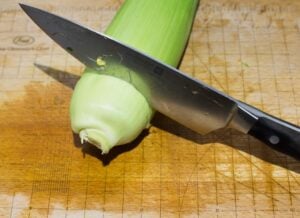
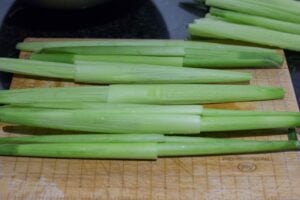
- Using a large knife, cut the corn. You can do it in one pass and then put the kernels through the grinder or food processor. Or in several passes (2-3) so that the kernels are finely chopped, do it as seen in the photo to keep all the juices or milk of the corn. If using frozen corn, grind it in the food processor without defrosting. Use the milk called in the recipe to add some liquid.
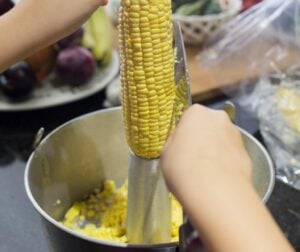

- In a large pot with a thick bottom, heat the butter or the “color” and add the onion. Brown for 8-10 minutes, stirring occasionally. Add the paprika, salt, pepper, and peppers. Stir.
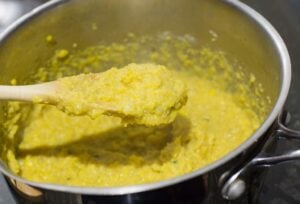
- Add the corn and milk, stir well and let it boil. I will thicken. Add the basil and pork rinds if desired. Add the cornmeal if it is necessary to thicken more. The mixture should be firm.
- Place three or four large spoons of the mixture on the open husks. Fold first on the sides and then the tips inwards. Tie with twine and give it the traditional bowtie form.
- Prepare a steam bath in a big pot. Steam the humitas for 1 hour. Serve hot, and cut the twine on the table. Traditionally in Chile, Humitas are cooked submerged in water (30-40 minutes), but here with the variety of corn is difficult to get the proper wrap and seal on the Humitas, and to prevent leaking is easier to steam.
- Serve with Chilean salad.
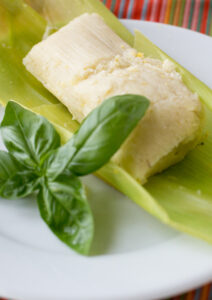
- Prep Time: 3 hours
- Cook Time: 45 minutes
- Category: Main dish
- Method: Stove-cooked
- Cuisine: Chilean
Nutrition
- Serving Size:
- Calories: 169
- Sugar: 10.6 g
- Sodium: 415.4 mg
- Fat: 4.6 g
- Saturated Fat: 1.5 g
- Carbohydrates: 31.9 g
- Fiber: 3.8 g
- Protein: 5.7 g

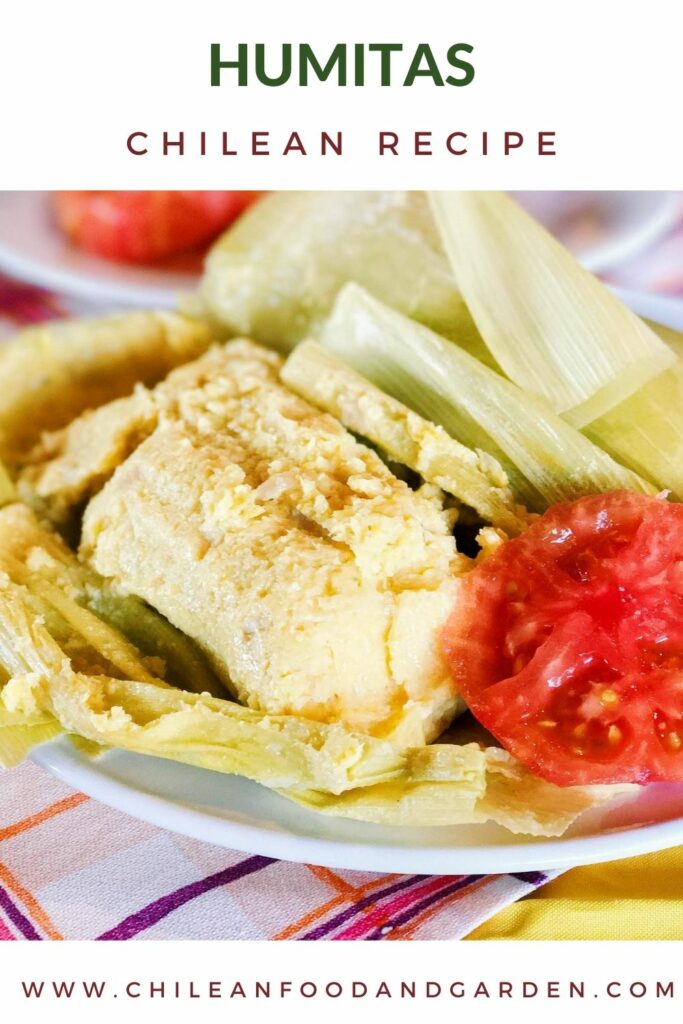

I liked this recipe. I always use yellow corn flour (not meal) to thicken the corn mixture (also for porotos granados con mazamorra and pastel de choclo). When I am done with grinding the corn, I extract as much as liquid possible and then I use half a cup of this milk to blend with two TBS of the corn flour and add it to the corn mixture while cooking it. It has nice results. I may try corn meal next time. I also, add the basil while I am processing the corn kernels. Since the American corn is sweet I do not use much sugar when I am eating the humitas.
Thanks for your recipes. BTW, your “pan frica” recipe is a winner all the time I bake it!
Luis (Columbus, Ohio)
Hi Luis,
Thanks for sharing your tips. I prefer cornmeal because it adds more savory flavors. The corn flour is pretty bland.
And yes, total agreement on no need for sugar added needed it.
Feliz 18!
Me vine a vivir a los Estados Unidos hace unos 3 años, ¡y estoy desesperada por unas humitas! No sabía si usar el choclo que venden acá iba a funcionar, pero me acordé de este blog y bueno… muchas gracias! Tenía muchas esperanzas de encontrar una receta de humitas aquí y no me decepcionaste. Lo que más extraño de Chile es nuestra comida a veces.
Muchas gracias por la receta, hice mis humitas a la olla, en vez de envueltas en hojas de choclo, pero definitivamente me ayudaron a pasar el antojo por humitas!
Que bueno Ria, si yo lo que más extraño es la comida y llevo 20 años acá.
Abrazos.
Love making this at home.